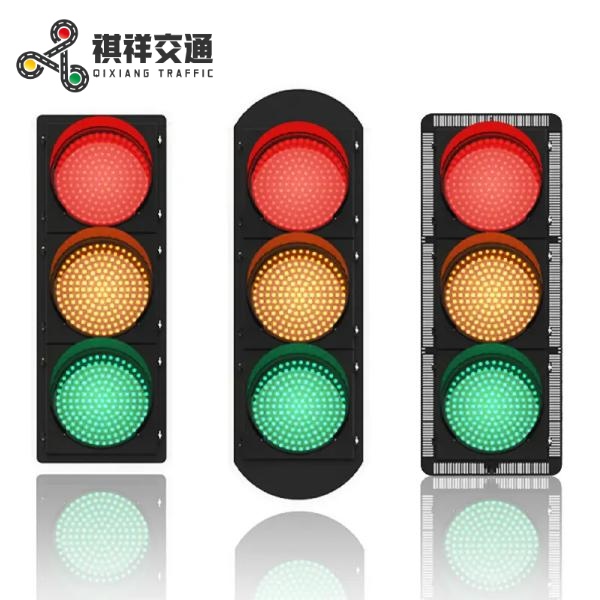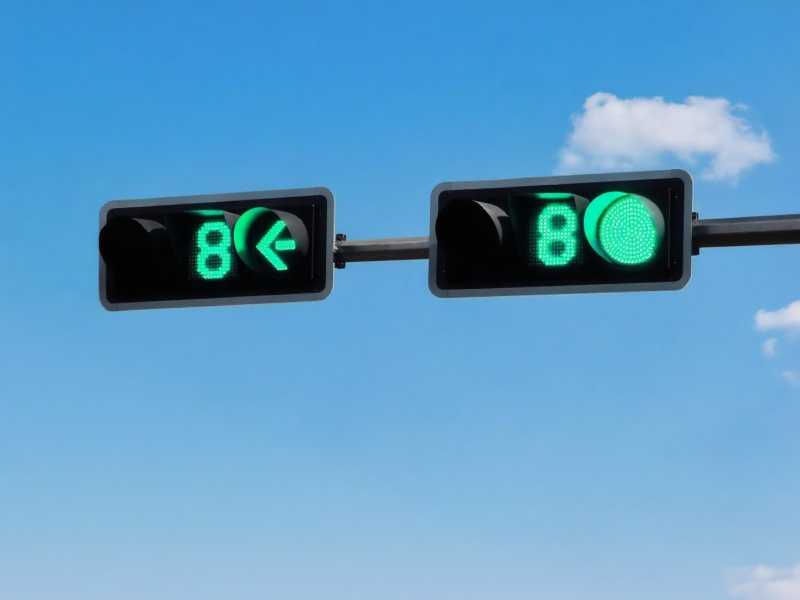In today’s society, traffic signals are a vital part of urban infrastructure. But what light sources do they currently use? What are their benefits? Today, traffic light factory Qixiang will take a look.
 Traffic light factory Qixiang has been in this industry for twenty years. From initial design to precision production, and finally to export services for global markets, every step of the process has been honed with a deep understanding of the industry and accumulated technical expertise. Our products include LED traffic lights, traffic light poles, mobile traffic lights, traffic controllers, solar signage, reflective signage, and more.
Traffic light factory Qixiang has been in this industry for twenty years. From initial design to precision production, and finally to export services for global markets, every step of the process has been honed with a deep understanding of the industry and accumulated technical expertise. Our products include LED traffic lights, traffic light poles, mobile traffic lights, traffic controllers, solar signage, reflective signage, and more.
The advantages of LED traffic lights are numerous. Based on practical experience, we can summarize them as follows:
1. LEDs directly convert electrical energy into light, generating extremely low heat, almost no heat at all. The cooled surface of LED traffic lights prevents burns to maintenance personnel and offers a longer lifespan.
2. Where LED traffic lights fall short of halogen bulbs and other light sources is their fast response time, which reduces the risk of traffic accidents.
3. The energy-saving advantages of LED light sources are significant. One of their most notable features is their low energy consumption, which is highly beneficial for lighting applications. The energy-saving effect is particularly evident in large-scale traffic signal systems. For example, consider a city’s traffic signal network. Assuming there are 1,000 signals, each operating 12 hours per day, the daily power consumption, calculated based on the power consumption of traditional signals, is 1,000 × 100 × 12 ÷ 1,000 = 12,000 kWh. However, using LED signals, the daily power consumption is only 1,000 × 20 × 12 ÷ 1,000 = 2,400 kWh, representing an 80% energy saving.
4. The operating environment of signals is relatively harsh, subject to extreme cold and heat, sun and rain, placing high demands on the reliability of the lamps. The average lifespan of incandescent bulbs used in typical signal lights is 1,000 hours, while the average lifespan of low-voltage halogen tungsten bulbs is 2,000 hours, resulting in high maintenance costs.
LED traffic lights have no filament damage due to thermal shock, and are less likely to experience glass cover cracking.
5. LED traffic lights maintain excellent visibility and performance even in harsh conditions such as constant sunlight, rain, and dust. LEDs emit monochromatic light, eliminating the need for filters to produce red, yellow, and green signal colors. LED light is directional and has a certain divergence angle, eliminating the aspheric reflectors used in traditional traffic lights. This characteristic of LEDs eliminates the problems of phantom imaging (commonly known as false display) and filter fading that plague traditional traffic lights, improving light efficiency.
Due to the crucial role of traffic signals in urban transportation, a large number of traffic lights require replacement each year, creating a significant market. High profits also benefit LED production and design companies, creating a positive stimulus for the entire LED industry. In the future, LED traffic lights will become even more intelligent and demonstrate significant environmental advantages. LED light sources also do not produce harmful substances during production, making them environmentally friendly and an ideal choice for green lighting. Facing the upgrade of intelligent transportation, traffic light factory Qixiang continues to integrate cutting-edge technologies such as the Internet of Things while maintaining its traditional advantages, providing global customers with a full range of products from classic to intelligent models. If you are interested, please contact us for more information about LED traffic signals.
Post time: Aug-06-2025







